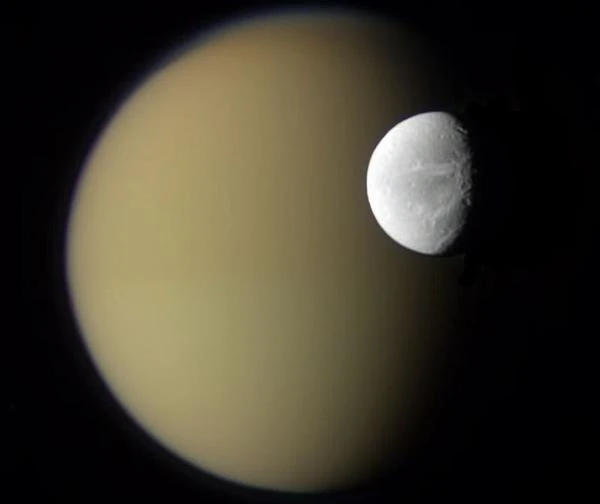
Titan and Dione, two of Saturn's largest moons, offer a striking contrast. Titan, Saturn's largest moon, is enveloped in a dense atmosphere rich in nitrogen and methane, while Dione, smaller and icier, features a surface pockmarked with craters and ice cliffs. These two worlds fascinate astronomers with their unique characteristics and their potential to harbor extremophile life forms.
Titan, with a diameter of 5,150 km, is larger than the planet Mercury. Its thick atmosphere (1.5 atm pressure) and hydrocarbon lakes make it a natural laboratory for studying prebiotic chemistry. In contrast, Dione, with a diameter of 1,123 km, is an icy world whose surface reflects nearly 70% of sunlight, making it one of the brightest bodies in the solar system.
Recent studies suggest that Dione may harbor a subsurface ocean, similar to Enceladus. Titan, on the other hand, has reservoirs of liquid methane and an exotic hydrological cycle. These discoveries open fascinating perspectives on the search for extraterrestrial life in the Saturnian system.
| Characteristic | Titan | Dione |
|---|---|---|
| Diameter (km) | 5,150 (The Moon ~3,474 km) | 1,123 |
| Atmosphere | Dense (nitrogen + methane) | Very tenuous (traces of oxygen) |
| Average temperature | -179°C | -186°C |
| Subsurface ocean? | Possible (water + ammonia) | Probable (liquid water) |
Source: NASA Solar System Exploration and Nature Astronomy (2024).